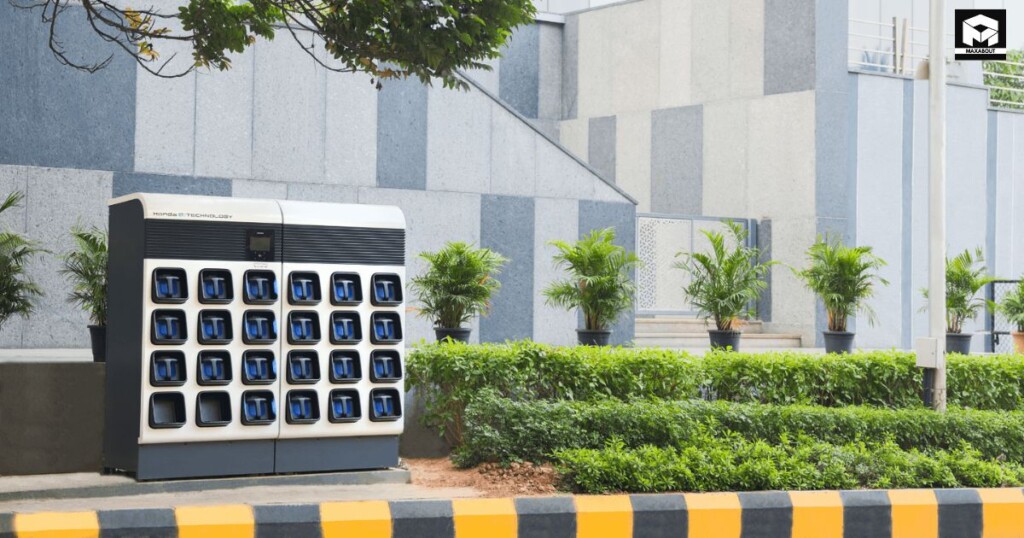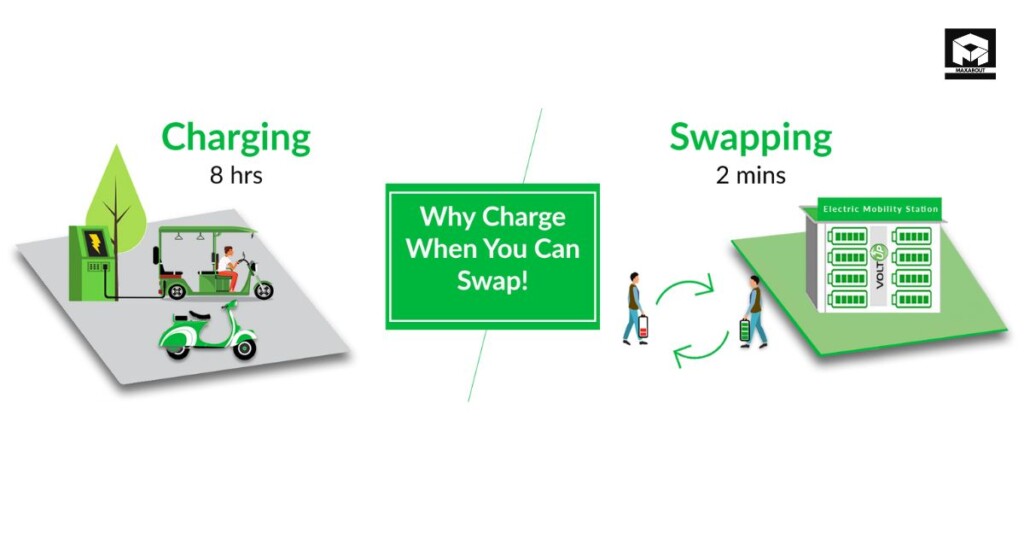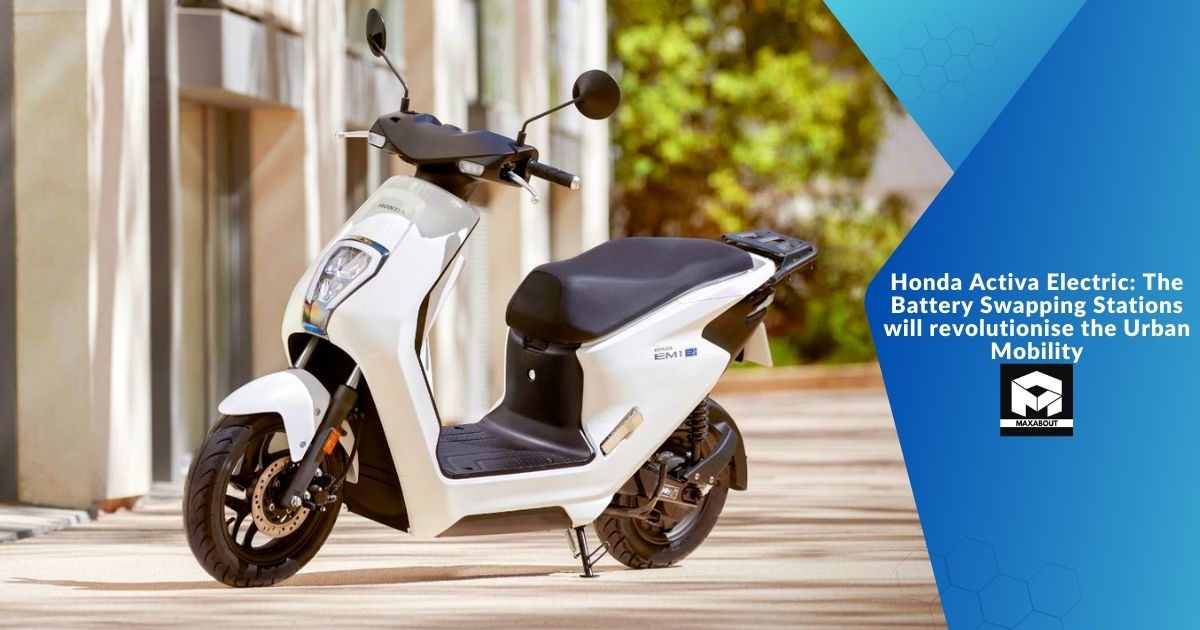The introduction of the Honda Activa Electric will see Honda changing the dynamics of the electric scooter market by bringing on board battery swapping stations. This is a game changing development – which promises to resolve both range anxiety and charging time concerns – in a bid to create electric mobility more mainstream and convenient for urban commuters. Keep reading to learn more about what this innovation could mean for the way we commute and to a bluer future.
What features, specifications makes Honda Activa Electric a unique product?
In essence, the Honda Activa Electric is an electric version of an electric scoot being offered by Honda. This is Honda’s contribution to a more environmentally friendly answer to its petrol powered variant. The new model will be a continuation of the Activa series design and reliability with advanced electric technology.

Why is Teslas Battery Swapping Technology Important?
The battery swapping technology is a revolutionary solution for charging electric vehicle. Rather than waiting for hours to charge a battery, users can pick up a fully charged battery in place of a depleted one within minutes. By doing so, this approach enables significant reductions in downtime and an increased effective electric vehicle operating range, thereby increasing their practicality for everyday use.
When Is the Honda Activa Electric Going To Arrive?
According to industry insiders, however, the Honda Activa Electric could go on sale as soon as 2024, though the fact is still to be formally announced. Honda has been teasing the product and latest developments suggests that the launch can take place sooner than expected.
What the Honda Activa Electric Should Offer
The Honda Activa Electric is expected to feature range of modern urban commuter oriented features. While specific details are yet to be revealed, it’s likely to include:
- A swappable battery pack
- Regenerative braking system
- Digital instrument cluster
- LED lighting
We expect the scooter to be as comfortable and practical as Activa series is renowned for, but now with the benefit of an electric propulsion engine.
How is the process of the Battery Swapping Station?
Cracking a glimpse into the future of electric vehicle charging is the battery swapping station in Bengaluru. Instead users can drive up to the station, and take out their depleted battery and place a new fully charged battery in. This should be a quick and easy process, that will take only a few minutes to complete.
What Makes Battery Swapping Better Than Traditional Charging?

Battery swapping offers several advantages over traditional charging methods:
- Reduced waiting time
- Extended range capabilities
- As the batteries can be leased, lower initial vehicle cost was possible.
- Users are not concerned about reduced battery degradation.
Due to these advantages, electric scooters become more attractive to other consumers and may help speed up electric vehicle adoption.
How near you are from a battery swapping station?
At present, a teaser has been posted that shows a battery swapping station in Bengaluru has been installed. Ideally located, this pilot is a start for a nation wide network of swapping stations. As the roll out continues, we can expect to see more stations popping up in key cities in India.
What can be expected from India in the Electric Vehicle Market?
If Honda were to introduce battery swapping technology on the Honda Activa Electric, it could have a huge effect on the electric vehicle market in India. It has the potential to:
Electric vehicles increase consumer confidence. To reduce the total cost of ownership of electric scooters by:
- And encourage other manufacturers to use similar technologies Accelerating the transition to electric mobility to solve some of the problems facing urban areas.
So what does this mean for urban commuters?
The promise of battery swapping is a compelling proposition for urban commuters at the least. It’s a convenient quick ‘refuel’ with the benefits of electric transportation. Commuters can have reduced running costs, lower maintenance requirements and enjoy the satisfaction of helping clean their cities up.
Comparative Design of the Honda Activa Electric and Its Petrol Counterpart
However, teasers indicate that the Honda Activa Electric, at least, will be maintaining a similar silhouette as that of its petrol counterpart, in the full design reveal. However, expect to see some distinctive elements that highlight its electric nature, such as:
- A redesigned front fascia
- Unique color options Some special badging and graphics.
- Maybe with a battery placement different seat design
The look of the familiar design language is likely to be kept in order to not disorient the loyal Activa customers while leaving an impression of its advanced technology with modern touches.
What Infrastructure Supports Battery Swapping?
To support a battery swapping ecosystem, several key infrastructure elements are required:
- Conveniently located swapping stations grouped into a network Standardized battery designs across manufacture of batteries.
- Transporting and maintaining batteries in a robust logistics fashion
- System integration for smart grid for efficient energy utilization
Honda has invested in this infrastructure as an investment towards making electric mobility a viable option for the many.
Battery swapping is already affecting the environment and all of us in ways we never imagined.
Battery swapping technology has the potential to significantly reduce the environmental impact of transportation:
It promotes the use of the electric vehicles, lowering the air pollution in urban atmospheres.
- Centralized ‘swapping’ of batteries can be optimized for renewable energy use:
- Extending the lifespan of the vehicle depends on the ability to easily upgrade the batteries as technology improves.
Battery swapping could provide an important role in cutting emissions from the transportation sector by making electric vehicles more practical.
What Kind Of Challenges Can Honda Face With This Technology?
While battery swapping offers numerous benefits, Honda may face several challenges:
- Until these issues are solved and until the technology enjoys widespread adoption and standardization.
- This also includes battery distribution and maintenance logistics management.
- Solving possible ownership and long term battery costs reservations
- Charging infrastructure competition with existing competitors
Crucial for success of Honda Activa Electric as well as its battery swapping ecosystem would be overcoming these challenges.
Key Takeaways
The upcoming Activa Electric scooter from Honda will use battery swapping technology, the brand has introduced. Besides, Bengaluru already has one such battery swapping station and there are more to follow. Battery swapping typically also means faster ‘refueling’ than when charging methods.
- It could slash range anxiety and dramatically decrease the adoption of electric vehicles. Lower running costs and reduced environmental impact will also be felt by urban commuters.
- Expected to arrive in 2024, the Honda Activa Electric could change face of urban mobility in India.

